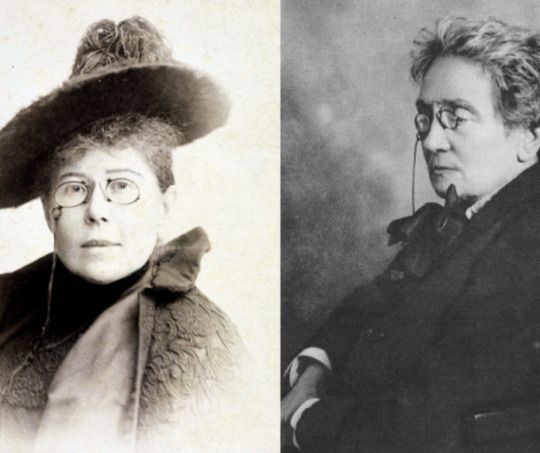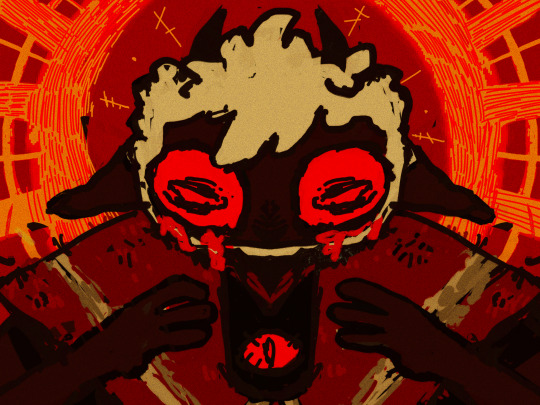#same sex attraction
Explore tagged Tumblr posts
Text
#tiktok#same sex marriage#same sex love#same sex couple#same sex relationships#same sex attraction#lgbtqia#lgbtq community#lgbtqiia+#lgbtqiia#lgbtqi
2K notes
·
View notes
Text

Saturday Night Bitches! Break out those dresses and lets hit the city!
#queer#transgender#trans#transgirl#trans community#crossdressing#transgenderwoman#trans pride#sexy crossdressers#cute crossdreser#sissy crossdresser#cross dressing#lgbtlove#lgbtqia#same sex relationships#castro san francisco#same sex marriage#same sex attraction#same sex love
1K notes
·
View notes
Text


#same sex attraction#Lesbians#JK Rowling#radfem#radblr#radfems#feminist#feminism#radfems please interact#radical feminist
324 notes
·
View notes
Text
By: Andrew Doyle
Published: Oct 14, 2024
It was hardly a plague of locusts, but it was disruptive nonetheless. During the annual LGB Alliance conference at the Queen Elizabeth II centre in Westminster on Friday afternoon, teenage activists unleashed thousands of crickets into the auditorium. The inconvenience was only temporary. The crowd simply relocated to another room and the event went on as before.
As those responsible were apprehended, many people were struck by just how young and posh they were. By this point, it should surprise precisely no-one that anti-gay activism in its current form is a predominately bourgeois pursuit. The symbolism of the crickets was, of course, deliberate. It was an attempt to dehumanise those in attendance, to suggest that they were akin to parasites, vermin, spreaders of disease, a common trope of those who seek to demonise minorities.


The perpetrators were children, and so it would be unwise to speculate too much on their motives. It is likely they were being manipulated by the group that has claimed responsibility, calling itself “Trans Kids Deserve Better”. As Bev Jackson, co-founder of LGB Alliance said on my show last night:
“Trans kids do deserve better. They deserve better than to be told lies that that they might have been born in the wrong body. They deserve better than to be told that these hormones and surgeries that they are clambering for will somehow solve all their problems. Many are on the autism spectrum. Many are struggling with their sexual orientation. We know that. They deserve better than to be told that we hate them. And they deserve better than to be labelled trans when they’re going through all the turbulence of adolescence, when your feelings about yourself are in constant flux.”
Irrespective of the intentions of the teenagers involved, this was anti-gay activism. To attack a group of lesbian, gay and bisexual people who have assembled to discuss the ongoing threats to their civil rights could hardly be defined in any other way. Likewise, to refer to groups such as LGB Alliance as “anti-trans”, “transphobic” or “hateful” - as activist media outlets such as the Metro and the Guardian have been known to do - is also an anti-gay strategy. In order to address a problem, one needs to label it accurately.
Gender identity ideologues are, by definition, anti-gay. They are campaigning to force their pseudo-religious belief-system onto the rest of society, one that claims that same-sex attraction is a myth, and that a mysterious spiritual sense of “gender” is the defining feature of homosexuality. Even if they have convinced themselves that they are “pro-trans” and “compassionate” and “progressive”, the implementation of their demands would result directly in the demolition of gay rights. And so “anti-gay activism” is not only an accurate description, it also cuts to the heart of what is at stake.
The trans activist movement in its current form is dominated by this belief in a material and stable “gender identity”, what one trans campaigner explained to me as an “essence of male or female”. This is a departure from the theories of Judith Butler, who posits that “gender identity” is an illusion created performatively and repetitively in accordance with societal expectations. For all their deification of Butler, the trans rights movement is insistent that she is wrong on this key point, and that an individual is “born trans” when there is a misalignment of body and “sexed soul” (to borrow Helen Joyce’s phrase).
This belief is wholly incompatible with the struggle for gay rights, which has always been predicated on the notion that there exist a minority of people who are innately attracted to their own sex. Activist groups such as Stonewall now argue that “homosexuality” is based on gender rather than sex, meaning that it is possible for a man to be a lesbian. He may have been born male (or “assigned male at birth” to borrow the voguish parlance), but his “gender identity” is female and this should be the salient factor when it comes to sexual orientation.
It is no easy feat to explain the contortions of logic on display here. Lesbian dating apps are now replete with men who claim to be women, many fully bearded and bepenised. Likewise, sex clubs for gay men now routinely admit women who have had their breasts removed and believe themselves to be male. The gay male hookup app Grindr even prohibits its users from filtering out women. As the company’s website puts it:
“When designing gender settings on Grindr, it was important to us to not further perpetuate discrimination and harm for the trans and nonbinary community. For this reason, we allow filtering based on gender - you can specify that you want to see men or women - but this will include all men or all women, because trans men are men and trans women are women.”
In other words, a company that has made a fortune from gay men’s sexuality is now shaming its customers for being gay.
The situation is so confusing that we now have mainstream celebrities such as Billy Bragg effectively campaigning against gay rights without realising it. He is not homophobic (as far as I’m aware) and yet he is assiduously promoting a movement whose end goal is the eradication of homosexuality. Bragg’s 1991 song Sexuality included the lyric: “Just because you’re gay, I won’t turn you away”. Perhaps a more appropriate version would be: “Just because you’re gay, I’ll have you surgically corrected in order to better conform to heterosexual paradigms”, although it wouldn’t scan or rhyme.
This is why to grow up gay in 2024 is considerably more risky than during the time of Section 28 in the 1980s. We have gay conversion therapy being promoted by the NHS in the form of “gender-affirming care”, and children who are gender non-conforming (and therefore statistically far more likely to be homosexual in later life) are being medicalised and shamed for their orientation. Moreover, the very organisations that were originally established to fight for gay rights are now actively working against the interests of gay people.
To release bags of insects into a gathering of homosexuals is the kind of tactic we might once have seen from neo-Nazis and extreme religious fundamentalists. Just because those responsible now claim to be “on the right side of history” does not justify their behaviour or make them any less regressive. These are the new reactionaries, espousing a particularly toxic form of anti-gay ideology because it has the approval of the corporate, media, political and managerial class. Homophobia never went away, it just took on a fresh disguise.
==

[ Source. ]
Gay men are not allowed to filter out women from their dating pool.
#Andrew Doyle#LGB Alliance#homophobia#woke homophobia#homophobia 2.0#anti gay#homosexuality#same sex attraction#gay erasure#religion is a mental illness
193 notes
·
View notes
Text
Hoping to find more lesbians or bisexual women out there (AFAB, to clarify). Interact with this post in some way so we can all find each other!
#lesbian#sapphic#bisexual#febfem#LGB#lgbt#lgbtq#wlw#afab4afab#lgb#same sex attraction#lesbians#bi#bisexuality#female homosexuality
472 notes
·
View notes
Text

On the left: Maria Konopnicka (1842 – 1910) who was a Polish poet, novelist, children's writer, translator, journalist, critic, and activist for women's rights and for Polish independence.
On the right: Maria Dulębianka (1861 – 1919) who was a Polish artist and activist, notable for promoting women’s suffrage and higher education.
These women spent over 20 years together. They lived together and were buried together according to Dulębianka's last wish. Unfortunately their bodies were separated after 8 years.
Dulębianka could be called "a butch" according to today's terminology. Konopnicka was more stereotypically feminine.
They were a lesbian couple.
It's a fact that has been denied for a long time (a classic "they were very close friends" case). Konopnicka was considered a great patriot and conservatives claimed that suggesting that she was in a relationship with a woman is "disrespectful". Some people still think so to this day, but her relationship with Dulębianka is confirmed and recognized by most historians.
#Maria Konopnicka#Maria Dulębianka#lgb#lgb history#lesbians#lesbian couple#vintage lesbians#butch#femme#lesbian history#lesbian relationship#they were roomates#homosexual#homosexual women#same sex attraction#radfem#radical feminism#radfem safe#radblr#radfems do interact#feminism#radfems do touch#polish#polish history#women in history#suffragettes#suffragette#polska#polska historia#poland
197 notes
·
View notes
Text

What’s bullshit is you people thinking these situations are even remotely analogous.
It is downright insulting to say that your persecution complex is the same as the oppression LGB folks have faced and continue to face in some parts of the world just because we are same-sex attracted.
Passing laws to protect minors from irreversible medical procedures when statistics show that most of them grow out of their dysphoria is not oppression. It’s not oppression to recognize that in many cases, dysphoria doesn’t cause anxiety, depression, or PTSD—anxiety, depression, and PTSD cause dysphoria. It’s not oppression to recognize that there are far fewer actual transsexual folks than the public is being led to believe there are. It is not oppression to point out how irrational and sometimes flat out dangerous TRAs are—there are trans people who point that out. It’s not oppression to point out that biological sex is real—that a woman is an adult human female and that women are oppressed because we are female. Preserving women’s sex based rights is not oppression.
All of this conflation is straight up insulting.
634 notes
·
View notes
Text
No one is saying that trans-identified people cannot or should not find love with a romantic partner.
We are just saying that same-sex attraction is REAL, and that lesbian and bi women‘s same-sex attraction and boundaries NEED to be respected. And the meaning of homosexuality (exclusive same-SEX attraction) should not be taken away.
Women can say "NO" at any point, for any reason. Women do NOT owe anyone romantic or sexual intimacy, under zero circumstances. And when a woman simply doesn’t like male genitalia, or male anatomy as a whole, that‘s not a "preference", "fetishism" or "bigotry", it‘s her sexual orientation and her natural right.
#women deserve better#radfem#radblr#radical feminism#gender critical#same sex attraction#ssa women#lesbian#bisexual#febfem#rape culture#fight patriarchy
399 notes
·
View notes
Text
Hell yeah !!!

#queer#queer community#lgbtq community#lgbt pride#lgbtqia+#lgbtq#lgbtqia#lgbtqiia+#lgbt#lesbian#gay#bisexual#transgender#pansexual#marriage#same sex marriage#same sex couple#same sex relationships#same sex love#same sex attraction
21 notes
·
View notes
Text
oh it’s so over (tribunal just ruled that australian lesbian groups can’t hold lesbian-exclusive events, unlike gay men or trans-only events) because it would mean we are discriminating based on gender identity. like that’s not exactly what the other exemptions for the above groups do? to make it worse they cited Tickle v Giggle and said that lesbians being allowed to have our own events would result in ‘increased health risks for transgender women’…. you gotta be fucking kidding me. the insane logic of ‘if lesbians are allowed to have events and not invite me i’ll kill myself and it’ll be their fault’ and our government is holding their hands and saying ‘yes of course, let’s ingrain that into our legal precedent’. it’s so over
28 notes
·
View notes
Text

Such a wonderful day for two lovely lesbians! I hope the best for them in the future!
#lesbian kiss#lesbian#lesbian blog#lesbian couple#lesbian day of visibility#lesbian kissing#lesbian nsft#lesbian photography#lesbian pride#lesbian visibility week#lesbian yearning#lesbiancouple#lesbian positivity#lesbians#t4t lesbian#sexy lesbians#trans lesbian#femme lesbian#lgbtqia#same sex relationships#same sex marriage#same sex love#same sex couple#same sex attraction#gay wedding#gay woman
216 notes
·
View notes
Text

Girl.. you're a lesbian. It's ok to be a lesbian.
#tomcat meows#gcblr#gendercritblr#radblr#terfsafe#radfem#radical feminism#radfeminism#gender critical feminism#gender critical feminist#tra homophobia#trans homophobia#gc feminism#gc feminist#abolish gender#gender abolition#radical feminist safe#radfem safe#ssa#same sex attraction#same sex attracted#gender critical#gendercrit#terfblr#terf#trans exclusionary radical feminist#dropthet#lgb#lgb drop the t#tifs
44 notes
·
View notes
Text


Meanwhile...
https://journals.sagepub.com/doi/full/10.1177/1363460719876835
Abstract
There is little research at the international level to help us understand the experiences and needs of trans people living with dementia, despite population aging and the growing numbers of trans people including the first cohort of trans older adults. There is a need to understand the widespread barriers, discrimination and mistreatment faced by trans people in the health and social service system, and the fears trans people express about aging and dementia. Anecdotal evidence from the scarce literature on the topic of LGBTQ populations and dementia suggest that cognitive changes can impact on gender identity. For example, trans older adults with dementia may forget they transitioned and reidentify with their sex/gender assigned at birth or may experience ‘gender confusion.’ [...]
Trans people with Alzheimer's may wake up screaming that they're missing body parts. Which makes no sense if it's "innate" and their body has been reconfigured to their supposedly-innate "gender identity."
But gay people with Alzheimer's don't forget they're gay.
#big figgot#homosexuality#identify as#i identify as#same sex attraction#religion is a mental illness
115 notes
·
View notes
Text


insert mcr lyrics abt blood on hands and sheets and whatever
hes actually a poser
#cult of the lamb#cotl#cotl lamb#cotl fanart#cult of the lamb fanart#artists on tumblr#furry#digital art#digital illustration#an edgy as fuck lamb#peaceful cult activities#he listens to my chemical romance#gerard way#he listens to mcr and feels edgy and cool abt it#homosexuality#same sex attraction#ratblr#illustration#animal art#nature aesthetic#cottagecore#living with adhd#tradwife#fursona#if i use enough filters they wont know#how would they know?#sexy#art#digital painting#fanart
54 notes
·
View notes
Text
Religious people frequently psychologise same-sex attraction to explain it away. It was suggested to me a number of times that my intense crushes on girls were a distorted expression of my desire for friendship and familial intimacy.
"In/Out: A Scandalous Story of Falling Into Love and Out of the Church" - Steph Lentz
#book quote#in/out#steph lentz#nonfiction#religion#psychology#same sex attraction#crush#wlw#lesbian#homosexuality#distorted#friendship#familial intimacy
34 notes
·
View notes
Text
Genuinely baffles me the sheer amount of volume there is of lesbians being told to “suck dick” or they’re transphobic. Or them trying to rationalize why same sex attraction is bad and evil and lesbians are wrong for their sexuality.
The same people who argue that choking, hitting, punching, pissing on, “consent non consent play” with their partners is completely moral have a problem when people have same sex attraction.
Btw, same sex attraction can NEVER be a fetish, because a fetish is defined as a sexual infatuation with something outside of the genitals.
Take “No” for an answer. I am a bisexual, if a woman who was a lesbian said she only dated other lesbians you know how I would react? “Ah, that’s a shame, but okay I understand” and leave her alone. If I wanted to go to a lesbian bar, but they made it clear it was EXCLUSIVELY for people who ONLY experienced female attraction, I would understand and respect their boundaries.
It’s a male pattern of behavior, but seeing the handmaidens defend them is disgusting.
To any woman who still defends men like this- you are not different. They say rape threats, death threats, and degrade us because it’s societally acceptable to do so. But they think the same thing about you. What happens when YOU say No to them? What happens when you’re the subject of their harassment?
You are not entitled to sex by anyone. Ever. Take no for an answer.
#female exclusive bisexual#bisexual woman#bisexual#lesbian#lesbians#radical feminism#radblr#radical feminist safe#radical feminists do interact#terfsafe#feminism#radical feminists do touch#terfblr#gendercritical#radfeminism#misogyny#same sex attraction#same sex love
13 notes
·
View notes